Chronicle of a Work-Trade Program
- Coral
Chronicle of a Work-Trade Program
One scrappy idealist’s venture into the world of permaculture
“This permaculture summer of mine was magical for me in a lot of ways, and beginning my journey with the work-trade program was certainly a beautiful way to get started on that journey.” Coral

Perhaps you are an experienced permaculturalist and manage an amazing piece of land or you educate others in the ways of the swale. Or perhaps you have a PDC and are eager to learn more. Or maybe you’ve recently begun this journey and are looking at what Midwest Permaculture has to offer. A Permaculture Design Certificate (PDC) is a good investment but it can be kind of expensive. If you’re a young 20-something like myself you may not be able to drop a thousand bucks for a week-long training. Fortunately, Midwest Permaculture provides another option: their work-trade program.
It’s an excellent excuse to get your hands dirty and your feet wet in actual hands-on permaculture while you prepare to take the course. For many of us, including myself, hands-on learning-by-doing is the most effective way to learn. If you are anything like me—young, broke-ish, with a passion for saving the Earth—then perhaps you would like to hear what a work-trade experience with Midwest Permaculture is like.
Traveling To Stelle
As I drove out towards Stelle, Illinois, where my work-trade program was set to take place, driving through Indiana and Illinois I observed the vast emptiness of the endless stretches of corn and soybean fields. I couldn’t help but notice the disconcerting irony between the monoculture desert and the permaculture I was supposedly coming here to study.
Finally, after driving for hours through the empty void of the formless land, Google Maps told me to turn left, and there it was: Stelle. A little piece of American suburbia in the middle of nowhereville.
 Warm Arrival
Warm Arrival
But here I was, in this weird community—Stelle. I got out of my car and went up to the house that was supposed to be the address of Bill and Becky Wilson. Their yard looked like the Garden of Eden, which is something I suppose you should expect from people who teach permaculture design courses for over a decade. I knocked. Becky answered the door and greeted me.
“Did you recognize our house from our yard?” she asked. I chuckled because it was true.

After exchanging greetings with Bill and Becky, I went ahead to move my stuff into the intern house, where I would be staying for the next month. I was to share this house with two other girls, who coincidentally were all around the same age as me.
New Friends
One of the other girls was already there in the intern house. Her name was Brie. She hailed from Kalamazoo, Michigan, where she had just finished a degree in anthropology and Spanish. The next day, the other girl arrived. Her name was Hunter, and she had just finished her sophomore year of college at Principia College. She was fascinated with ecology, and had brought with her a particular affinity for studying native bees and pollinators for prairie restoration.
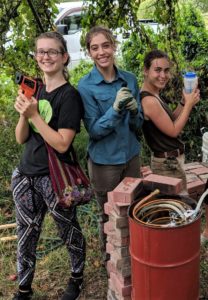
During our orientation, we were given a tour of the Midwest Permaculture project here in Stelle: nine acres owned by the Center for Sustainable Community, a nonprofit based here in Stelle. On it there was a community vegetable garden, which we would be tending often during our work trade. We passed by a pond, from which nutrient-rich water was pumped into the garden.
Natural Building
Next we came upon a small cabin—this was an “Earthshelter,” a tiny home designed from mostly natural elements found on the land itself.
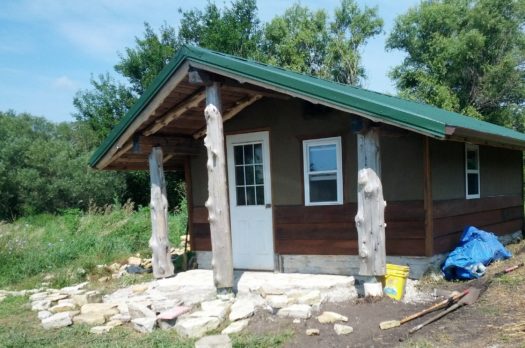
Finally, at the edge of the nine acre property, was an old apple orchard that had been planted a long time ago when Stelle was founded as an intentional community in the 70s. Some of the apple trees were still bearing tasty food, but it was obvious that the trees were growing old. A small grove of young fruit and nut trees had been planted at the edge of the orchard, a food forest to replace the aging apple trees.
Hot Water Shower with Rocket-Stove Heater
On the other side of the orchard, there was a large rectangular structure, a shower. Bill said that eventually they were planning to open up the land as a campground on Hipcamp, which is a website much like AirBnB, but for camping, where travelers can pay a small fee to pitch their tent on your property. Anyway, Bill told us that they were trying to use the HipCamp website as a platform to get people here and show them the Good News of permaculture.
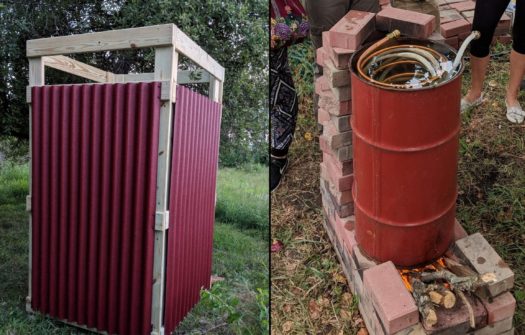
“So here,” he gestured to the rectangular structure, “is a showerhouse. During your time here we’re going to build a plumbing system and a rocket stove to heat the water so that campers can see an off-grid, easy way to get hot water.”
How a Rocket Stove Works
A rocket stove, I later learned, is basically like a really efficient oven. You get a small fire going, but because of the way the rocket stove is built, the fire gets really hot really fast. And as the fire gets hotter and hotter, air is sucked through the stove. Because it’s so hot, everything gets burned up and there isn’t any smoke.
Heat from the fire then fills up a thermal mass, which stores the heat from the rocket stove. In this case, the thermal mass is the water tank. A separate water line brings cold water to a copper coil running throughout the water tank which picks up heat, sending warm water to the shower stall. To learn more, Bill explains the basics of rocket stoves here.
Hands-on Experiences
As the month of the work-trade program commenced, I learned many things and got many hands-on experiences that I might have missed if I had simply taken a PDC course. In today’s society, we seem to prioritize the credentials you receive from classroom learning over actual hands-on experiences.
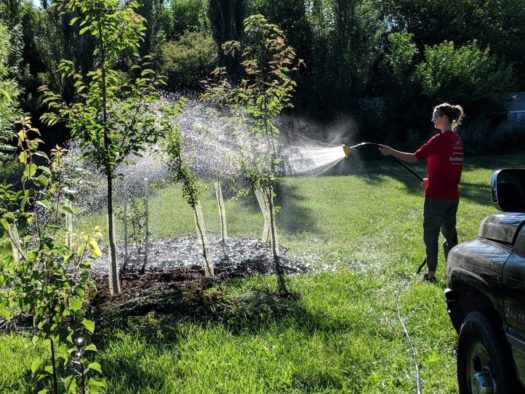
But there’s something special about being a sort of “apprentice” to a trade, even if it’s only a short-term month-long program. I learned a lot more about permaculture from the work-trade program than I would have if I only took the class. In addition to building a rocket stove, we got to work in the community garden, prepare and spread foliar sprays, build a stone porch for the Earth Shelter, learn how to thresh garden-grown wheat, and burn brush piles (my personal favorite).
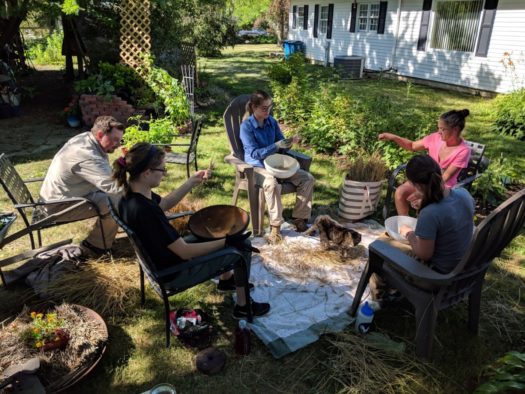
Stelle – Experiencing Real Community
But beyond the practical learning component, there was something very special about doing a work-trade program in Stelle that went beyond horticulture. While we three girls were in Stelle, we learned a lot about what it means to live in a community and have strong relationships with others in your community. We attended the Stelle community dinners, and talked freely with our neighbors. You see, Stelle is a village. It began as an intentional community in the 70s and even though it stopped being an intentional community, there remains a deep network of meaningful relationships that we tend not to experience in most cities, not even in most small towns.
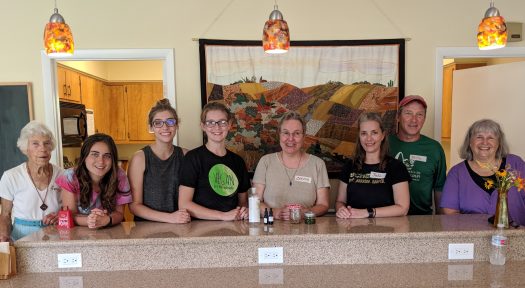
It was the spirit of the Stelle community that perhaps inspired the three of us work-traders—myself, Brie, and Hunter—to open up to each other. Within that short summer month, the three of us became trusty friends. In my whole life, I have never experienced that level of connection with a small group of females in such a short amount of time.
During this time, Brie lent me a book of hers. It was the book Ishmael by Daniel Quinn. It is sort of a novel, but mostly a philosophical treatise, but anyway it was an incredible book to read while doing a permaculture work-trade program in preparation for a PDC. If you haven’t read it, and you have an earnest desire to save the world like I do, then I encourage you to read it yourself. Frankly, I think it’s an important book that should make the permaculture reading list.
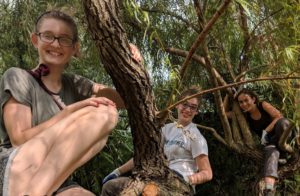
A Wonderful Experience
This permaculture summer of mine was magical for me in a lot of ways, and beginning my journey with the work-trade program was certainly a beautiful way to get started on that journey. Being young, able-bodied, and relatively financially lacking, a work-trade in exchange for a PDC was more than a bargain. I know that there are those of us out there who are interested in permaculture, but maybe we can’t afford to take the design course, or maybe we want some hands-on experience before we can feel comfortable doing design work. A work-trade program may be a good option for you. I can’t promise that your work-trade experience will be as fulfilling or as magical as mine was, but nothing can ever be futile if it is done with an earnest heart and an earnest desire to make the world a better place.
All we can do is listen to the words of Henry David Thoreau:
“Go confidently in the directions of your dreams!”
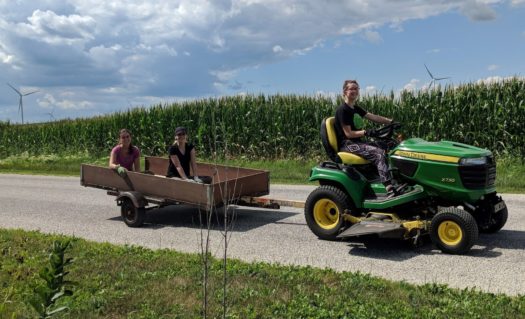

2 thoughts on “Chronicle of a Work-Trade Program”
Permaculture = Stewardship
Technology + rocket stove = Entropy
Person + Passion = Joy
In the words of Emerson
“Do not go where the path may lead you, instead blaze your own and leave a trail. “
This was so fascinating for me to read… thank you for sharing… looking forward to hearing you next step…. love you…. Meredith